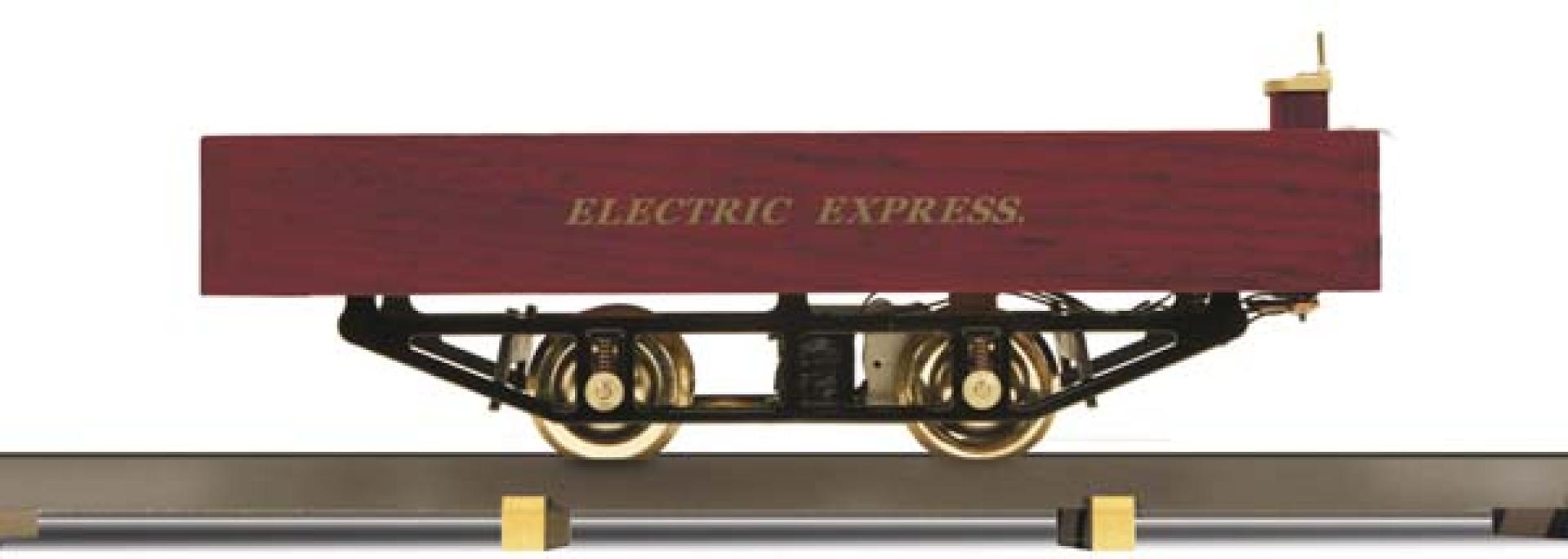

Type I Std. Gauge Lionel Corporation Tinplate No. 200 Electric Express (Non-Powered)
Overview
Customers, however, began playing with the Electric Express, so Cowen added a trolley to the line and went into the toy business - tentatively. The earliest catalogs were titled "Miniature Electric Cars with full accessories for Window Display and Holiday Gifts." Cowen also felt it necessary to reassure customers that electric toys were safe to play with: "The word 'electric' does not always stand for a power dangerous to handle. It is true of current sufficiently powerful to operate large street cars and big machinery but as applied to our models (only a few dry batteries or in connection with the house lighting circuit) it is totally impossible to experience the slightest shock."
Our model accurately recreates Lionel's first train, the 1901 version (Type I) of the No. 200 Electric Express. The body is a simple wooden box about 15" long with a motorman's controller; not until the following year would the Type II version feature brass corner braces and end steps, as well as a longer body. (Some of the few surviving No. 200's bear Cowen's initials on the bottom in his own hand, making it likely they were assembled by the young entrepreneur himself.) Like the original, our model rides atop a cast metal frame housing the motor, and is supplied with a circle of 2 7/8" gauge track. Unlike the original, however, this Electric Express can be powered from any standard AC transformer.
